How and What Our
Swans Eat
Precious & Marlika | Papa & Mama | Boy | The Baby | Boulika | Tweety | Two Brothers
On this page: How and What They Eat | How Much They Eat | Supplemental Feeding
Why The Public Is Asked Not To Feed | Foods Poisonous to Swans | References
► How and What Our Swans Eat
Mute Swans’ diet consists mostly of aquatic vegetation and roots, small proportions of aquatic insects, and even tiny fish or tadpoles. Mute swans do not dive but plunge their head and long neck below the water's surface to tug at aquatic plants with their bills. Swans feed in the deeper parts of the lagoon than ducks and other waterfowl and so do not compete with them directly for food; in fact, food is made more readily available to other birds by swans because parts of the growth they consume float to the surface while the swans are feeding.
Visitors to the lagoon will notice that sometimes the swans’ heads and necks are stained brown from contact with the mud on the bottom of the lake.
Swans also love grass, and a special treat for them is the opportunity to graze the grassy areas around the lagoon in the springtime. This tender grass is essential to the development of new cygnets’ digestive systems, and it’s one of their first ventures abroad with Mom and Dad, to find the greenest areas where they can happily nibble.
► How Much Do Our Swans Eat
Swans’ body temperature is 106o F (temperature can vary slightly, depending on time of year and environment temperature) and a Mute Swan weighs on average from 20 to 27 pounds (9 to 13 kg). They need to consume about 20-25% of their total body weight per day.
Swans are not greedy and will not over-eat; they will return to a food source numerous times rather than consume it all at once.
► Why Lost Lagoon’s Swans Receive Supplemental Feeding
There are currently 13 swans on Lost Lagoon, and given its capacity, there is not enough natural growth to sustain this many swans and the other species of waterfowl that also take their nourishment from the lake.
The Stanley Park Wildlife Technician and volunteer helpers are therefore authorized to provide supplemental feeding in the form of a mixture of wheat, cracked corn and poultry pellets. The swans receive one such feeding daily throughout the warm months, and twice daily (morning and evening) in the cold months when lagoon aquatic growth is at a minimum.
► Why the Public Is Asked Not to Feed the Swans
People have always enjoyed feeding geese, ducks or swans at beaches and parks. What they might not realize is that Malnutrition is caused by the types of food that people hand-feed the birds. Foods such as bread, crackers, bagels, cookies don’t provide the necessary energy and nutrients for proper health, and energy is wasted in digesting these foods. Malnutrition leads to low energy, muscle deterioration, decrease in successful reproduction, and death. Other foods containing salt and chemicals are extremely harmful to the birds: dry dog and cat food, chips, French fries, Doritos, popcorn, and any other snack-foods are to be avoided.
In the case of Lost Lagoon’s swans this is even more vital, because they are pinioned (wings cut so they cannot fly - required by Environment Canada because Mute Swans are a non-native species). They are thus totally dependent on the food available to them within the confines of the lagoon. A healthy balance ensures that they will continue to bring their own special beauty and delight to everyone for a long time to come.
The public is asked not to entice the swans any distance from the water, as this makes them vulnerable to dog attack and other risks.
► Foods That are Poisonous to Swans and Other Birds
CHOCOLATE is harmful and can be fatal to birds. Chocolate poisoning first affects a bird's digestive system, causing vomiting and diarrhea. As the condition worsens, the bird's central nervous system is affected, resulting in seizures and eventually death.
Salt: While all living beings need regulated amounts of sodium in their systems, salt can lead to a host of health problems in birds, including excessive thirst, dehydration, kidney dysfunction, and death. Avoid feeding them any foods with added salt.
Apple Seeds: They contain trace amounts of Cyanide. While the fruit of the apple is fine for birds, be aware that in addition to the poisonous seeds, there may be pesticides present on the fruit's skin. Be sure to thoroughly cleanse and core any apple pieces to avoid exposure to these toxins.
Onions cause vomiting, diarrhea, and a host of other digestive problems. It has been found that prolonged exposure can lead to a blood condition called hemolytic anemia, which is followed by respiratory distress and eventual death.
Dried beans: Uncooked beans contain a poison called hemaglutin that’s very toxic to birds.
Avocados cause cardiac distress and heart failure.
Mushrooms cause digestive upset, and caps and stems of some varieties induce liver failure.
Caffeine and alcohol cause cardiac malfunction.
Tomato leaves (related to the nightshades), stems, vines & leaves are highly toxic to birds.
► References
1. Swan Keeper’s Handbook: A Guide to the Care of Captive Swans (Geoffrey R. Gardner, Fanchon F. Funk, Sheila A. Bolin et al) Krieger 2003
2. E.F.Sultanov (Zoological Institute, Azerbaijanian Academy of Sciences, Baku, Azerbaijan)
3. Birkhead, M. and Perrins, C. (1986) The Mute Swan (Croom Helm Ltd.)
4. Ornithology Laboratory – Digestive System (Aug 2001)
5. Leslie Day, 79th Street Boat Basin Flora and Fauna Society
6. The Swan Sanctuary, Felix Lane, Shepperton, Middlesex, UK
7. (Reilly, 1968; Terres, 1980)
- NEW: Swans building nest in inappropriate area by: Victoria
- NEW: Grieving behaviour after chased cygnet is killed? by: Maxine
- NEW: Re: Swan flight by: The Regal Swan
- NEW: Grieving behaviour after chased cygnet is killed? by: Maxine
- Wild swans at Lost Lagoon? by: Miki and Fiona
- Fiona and the swans by: Message from Karen
- Royal swan fight by: Just trying to kill each other!
- Fiona and the swans by: Message from Karen
- We’re Walking on Air! by: Fiona
- "Attempted Murder" by: Jřrgen Bjerring

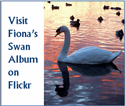
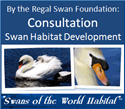
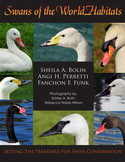

 I have just been in Vancouver for a couple of days and just prior to leaving I took a 5 mile stroll around Stanley Park culminating at Lost Lagoon. There I saw Fiona feeding the swans and I have to..
I have just been in Vancouver for a couple of days and just prior to leaving I took a 5 mile stroll around Stanley Park culminating at Lost Lagoon. There I saw Fiona feeding the swans and I have to..
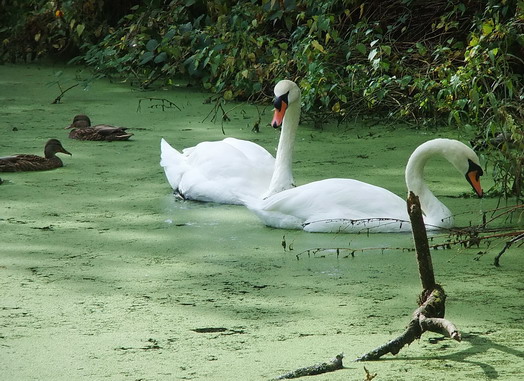 Having just returned home from a trip to see our former Lost Lagoon swans Tristan, Marika and Bijan in their new location, our happiness cannot be measured. We already knew they were in an ideal..
Having just returned home from a trip to see our former Lost Lagoon swans Tristan, Marika and Bijan in their new location, our happiness cannot be measured. We already knew they were in an ideal..
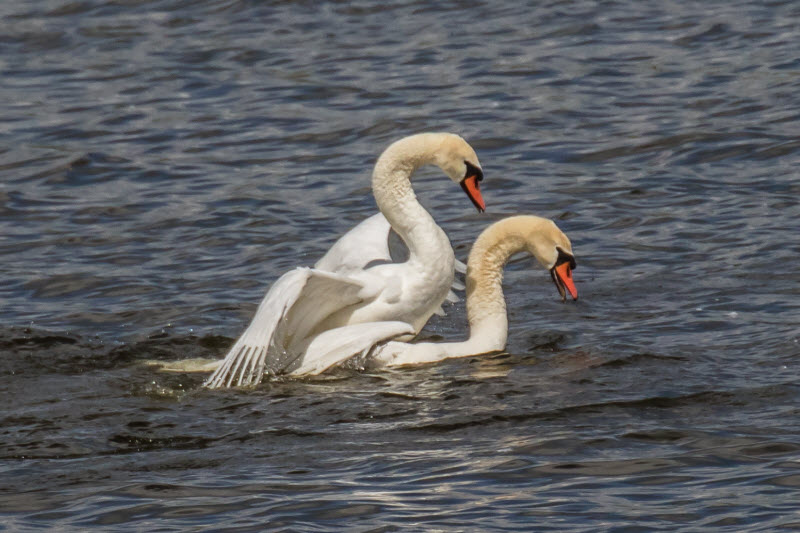 Yeasterday - May 22 - I saw two Mute Swans in close contact. During the foreplay the biting was not very aggressive and after a couple of minutes it could look like a mating. But after 15 seconds the..
Yeasterday - May 22 - I saw two Mute Swans in close contact. During the foreplay the biting was not very aggressive and after a couple of minutes it could look like a mating. But after 15 seconds the..
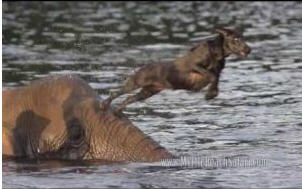 The relationship of Bubbles and Bella developed because of their shared love of the water. The pursuit of "aquatic antics" instilled a strong bond between these unlikely pals. Watermark on..
The relationship of Bubbles and Bella developed because of their shared love of the water. The pursuit of "aquatic antics" instilled a strong bond between these unlikely pals. Watermark on..

